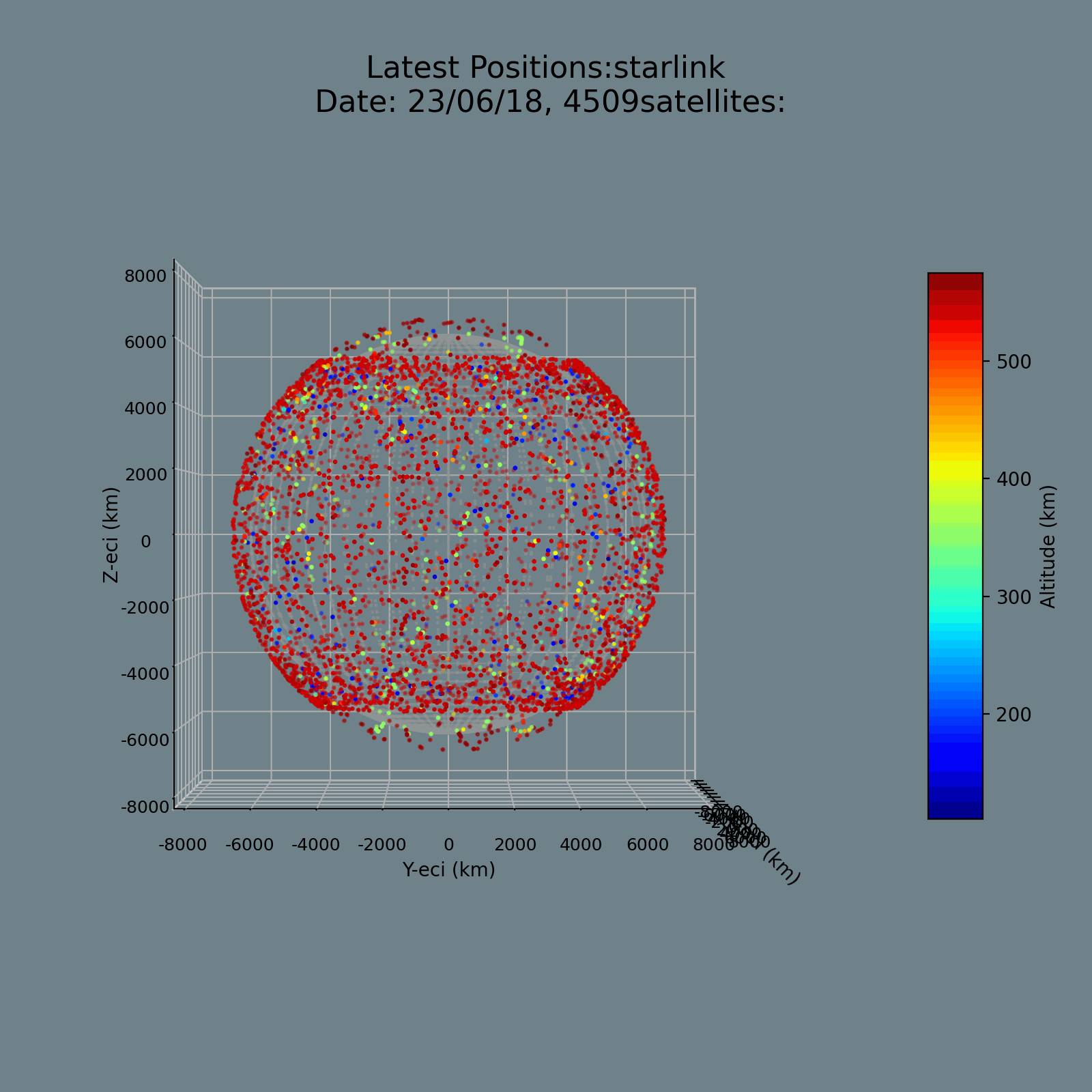Data Visualization of Satellite Constellations
Within the research group, part of our work is focused on communicating the challenges associated with mega-constellations. Words and numbers are only one way to convey the problems we are working on. I have a developped a set of visualizations to aid me in easily conveying different information about mega-constellations. The visualizations are based on the NORAD TLE data and are updated semi-regularly. Find some examples below, and if you are interested the code to the repository is here.


